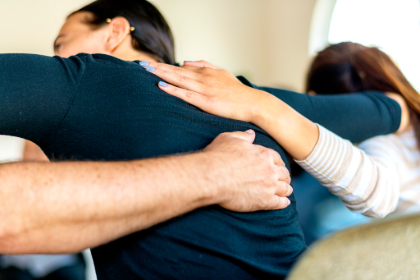Disaster Cleanup & Restoration
24/7/365 Emergency Service
Palm Desert Office: (760) 320-2128
Servicing Riverside County, CA

Nobody wants disaster to strike. But if it does, you must be prepared to deal with what comes once the storm has settled. Follow this post-disaster recovery checklist by Daniel’s DKI in Riverside County, CA to have a more effective healing process.

When a disaster strikes—whether it’s a storm, flood, fire, or earthquake—the aftermath can feel overwhelming. Emotions run high, property damage may be extensive, and it’s difficult to know where to start. But taking a structured, step-by-step approach can help you recover faster and minimize further loss.
Here’s a comprehensive Post-Disaster Recovery Checklist to guide you through the crucial hours and days following a disaster.
Having the right restoration company by your side can help you have a smoother and more successful recovery process. Call Daniel's DKI in Riverside County, CA at (760) 320-2128 to get the assistance you require through this difficult time.
Post-Disaster Recovery Checklist
1. Ensure Personal Safety First
Your health and safety—and that of your family or occupants—should always be the top priority.
- If authorities say to evacuate, do not return until they declare it safe.
- Watch out for downed power lines, gas leaks, sharp debris, and unstable structures.
- Use flashlights instead of candles to avoid fire hazards.
- Check for injuries and seek medical attention if needed.
2. Document the Damage
Before you move or remove anything, take extensive photos and videos of the damage from multiple angles. This will be essential for:
- Filing insurance claims
- Supporting disaster assistance applications
- Creating restoration estimates
Be sure to document structural damage, damaged contents, and even the exterior surroundings.
3. Contact Your Insurance Company
Notify your insurance provider as soon as possible.
- Have your policy number ready.
- Share the visual documentation you collected.
- Ask what is covered and whether you’ll need adjuster visits before clean-up begins.
4. Secure the Property and Mitigate Further Damage
Even after the disaster has passed, your property can still be vulnerable to additional risks like theft, vandalism, or further weather damage. For example, the longer water, soot, or mold remains untreated, the more costly the damage becomes.
- Board up broken windows and doors.
- Tarp or patch holes in the roof.
- Shut off utilities (gas, electricity, water) if it’s safe to do so.
- Remove standing water if safe.
- Begin drying out wet areas using fans or dehumidifiers.
- Isolate affected areas to prevent mold from spreading.
It’s very important to note that you should only do this if you’re able to and if it’s safe. If not, professional restoration companies like DKI can respond immediately to secure your site and prevent secondary damage.
Call Daniel's DKI in Riverside County, CA at (760) 320-2128 to get a free estimate on professional property restoration services that can get your property and belongings back to their original glory.
5. Sort and Inventory Damaged Contents
Make a list of damaged or destroyed items, including:
- Furniture
- Electronics
- Appliances
- Clothing
- Personal belongings
Note the value, age, and condition of each item. This will be useful for both insurance and contents restoration specialists.
6. Hire a Certified Restoration Professional
Post-disaster recovery is not a DIY job—especially when structural integrity, mold, or hazardous materials are involved.
- Choose a company that is licensed, insured, and certified in restoration (like DKI).
- Ask for a written estimate and timeline.
- Ensure they coordinate with your insurer for a smoother claims process.
DKI professionals have the tools and training to restore your property quickly, safely, and efficiently.
7. Track All Expenses
Between all of the mess and things you need to take care of, it’s easy to forget that you should keep track of your expenses. Keep receipts for:
- Emergency repairs
- Temporary lodging
- Meals and supplies
- Restoration work
Your insurance may reimburse these costs, and accurate records help avoid disputes during claims processing.
8. Stay Informed and Updated
Monitor local news, weather alerts, and government recovery resources. Programs like FEMA or local disaster relief funds may provide:
- Temporary housing
- Financial aid
- Repair grants
9. Take Care of Yourself and Your Family
Emotional recovery is just as important as physical restoration, so don’t neglect it.
- Don’t hesitate to seek counseling or support groups.
- Talk openly with children about what’s happening.
- Give yourself permission to take breaks and rest.
Recovering from a disaster is a process, not a single event. With the right support and plan, your property—and peace of mind—can be restored.




